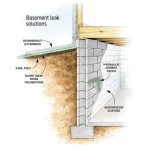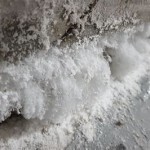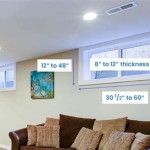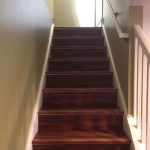Covering Insulation In Basement Ceiling
Basement ceilings tend to be cold and damp, which can make the entire basement uncomfortable and increase your energy bills. Covering the insulation in your basement ceiling can help to solve these problems and make your basement more livable.
There are a few different ways to cover insulation in a basement ceiling. One option is to install drywall. Drywall is a relatively inexpensive material that is easy to install. It also provides a finished look to your basement ceiling.
Another option is to install suspended ceiling tiles. Ceiling tiles are lightweight and easy to install, and they come in a variety of styles and colors. They can be a good option for basements with low ceilings.
Whichever method you choose, make sure to follow the manufacturer's instructions carefully. Improper installation can lead to problems with your insulation, such as air leaks or moisture damage.
Benefits of Covering Insulation In Basement Ceiling
There are several benefits to covering insulation in your basement ceiling, including:
- Improved comfort: A covered basement ceiling will help to keep your basement warmer in the winter and cooler in the summer, making it more comfortable to spend time in.
- Reduced energy bills: By insulating your basement ceiling, you will reduce the amount of heat that escapes from your home, which will lower your energy bills.
- Reduced noise: Insulation can help to reduce noise from the basement, making your home more peaceful.
- Improved air quality: Insulation can help to trap dust and allergens, improving the air quality in your home.
Tips for Covering Insulation In Basement Ceiling
Here are a few tips for covering insulation in your basement ceiling:
- Choose the right material: There are a variety of materials that can be used to cover insulation in a basement ceiling, including drywall, suspended ceiling tiles, and spray foam. Choose the material that is best suited for your needs and budget.
- Follow the manufacturer's instructions: Be sure to follow the manufacturer's instructions carefully when installing any insulation or covering material. Improper installation can lead to problems with your insulation, such as air leaks or moisture damage.
- Seal all air leaks: Make sure to seal all air leaks around the insulation and covering material. Air leaks can reduce the effectiveness of your insulation and cause moisture problems.
- Ventilate your basement: It is important to ventilate your basement to prevent moisture problems. Install a fan or open windows to allow air to circulate.
Conclusion
Covering insulation in your basement ceiling is a great way to improve the comfort, energy efficiency, and air quality of your home. By following these tips, you can ensure that your insulation is installed properly and that you get the most benefits from it.

Ideas To Cover A Basement Ceiling Easy Tiles

Ideas For Covering Insulation In Basement Ceiling Doityourself Com Community Forums

How Can I Cover Exposed Insulation In My Basement Cheap Hometalk

Should I Insulate My Basement Ceiling And Walls Aire Serv

How To Cover Insulation In Basement
Covering Exposed Fiberglass Insulation In Unfinished Basement Diy Home Improvement Forum

How To Cover Insulation In Basement Ceiling Barrier Energy

Basement Ceiling Insulation Interior Inspections Internachi Forum

Ceiling Insulation In Your Basement

Basement Ceiling Ideas Planning Your Way Around The Obstacles Youtube
See Also








